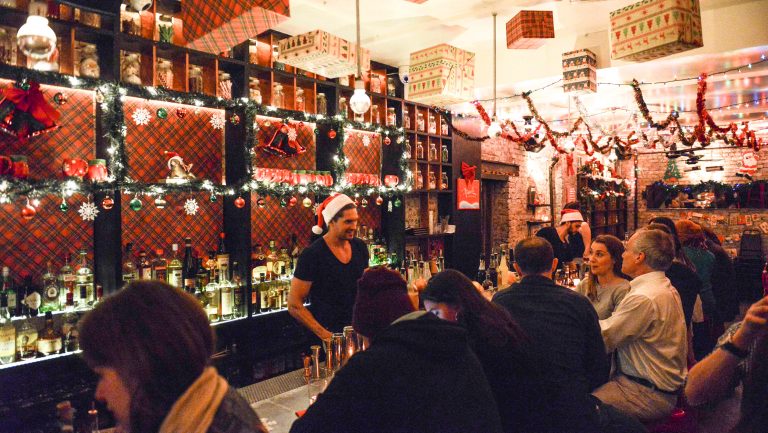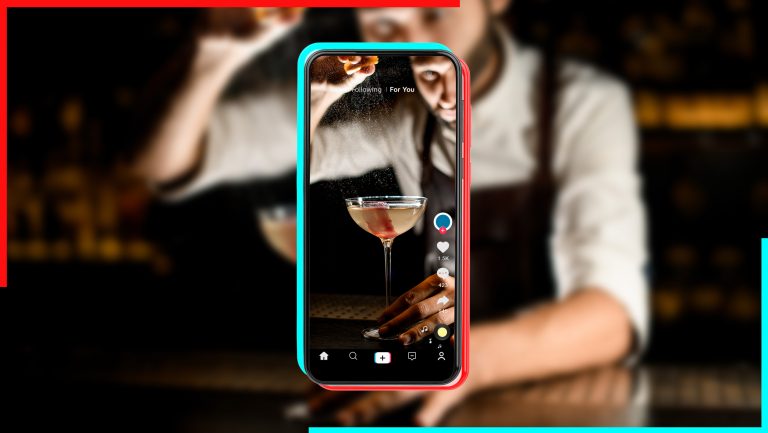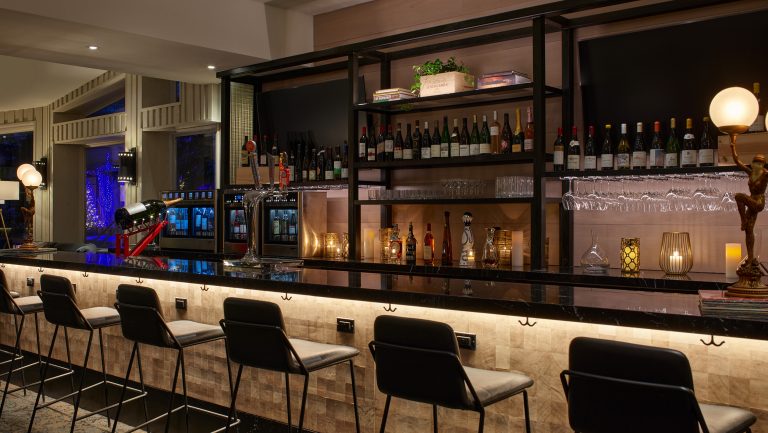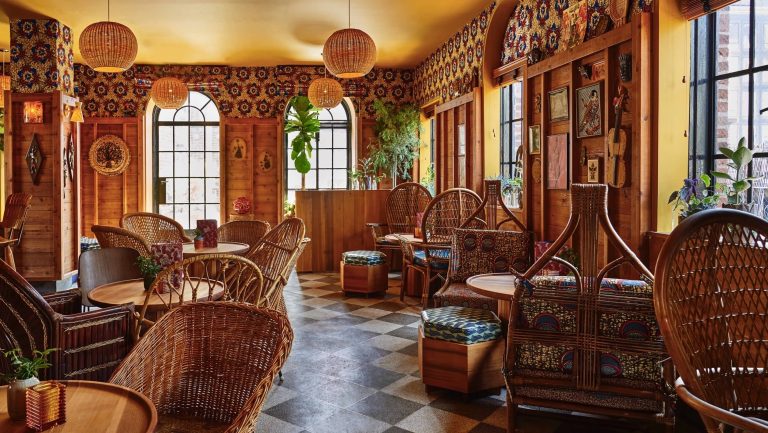Twinkling lights, “Jingle Bell Rock” on repeat, gingerbread-scented Old Fashioneds in snowball-shaped mugs—all set the scene for the Christmas pop-up bar phenomenon that started in 2014 as Miracle on Ninth Street and has now grown well beyond Manhattan’s East Village, with more than 50 Miracle bars set to pop up around the world this holiday season.
Yet the business of keeping spirits bright is a year-round job for Miracle owner Greg Boehm and manager Joann Spiegel. Miracle has grown into a full-fledged brand—and business model, involving franchising, merchandising, and distribution.
Economies of scale are a key reason the Miracle business model is successful; in addition to his ownership stake in the bars, Boehm is the proprietor of the specialty book publisher Mud Puddle and the barware manufacturer and distributor Cocktail Kingdom.

Don’t miss the latest drinks industry news and insights. Sign up for our award-winning newsletters and get insider intel, resources, and trends delivered to your inbox every week.
“At Cocktail Kingdom we have a large art department and manufacturing department,” Boehm explains. “We have the ability to support this with more than just a few decorations.”
The Making of the Miracle
The concept took shape four years ago, as the bar Mace was poised to open on East Ninth Street but wasn’t quite ready to welcome customers. Rather than letting the space lie fallow through the lucrative holiday season, Boehm, along with his partner Jeannette Kaczorowski, and the bartender Nico de Soto who’s a co-owner, hung a bunch of tinsel and opened a Christmas-themed pop-up bar.
The kitschy move paid off: Once word got out, thirsty patrons lined up along the block to toast with Christmas-themed drinks and to gather in a Hanukkah Hideaway lined with shiny silver foil and blue dreidel cutouts (Christmas bar mogul Boehm happens to be Jewish). When the holiday season ended, so did Miracle; in May 2015, Mace, a bar featuring drinks inspired by exotic spices, officially opened.
Since then, Miracle has expanded at an impressive clip, to four outlets in 2015, and 17 bars, including some international locations, in 2016. This year it’s already ballooned to 55 locations, ranging from Boston, New Orleans, and Seattle to Trnava, Slovakia; Athens; and Rio de Janeiro.
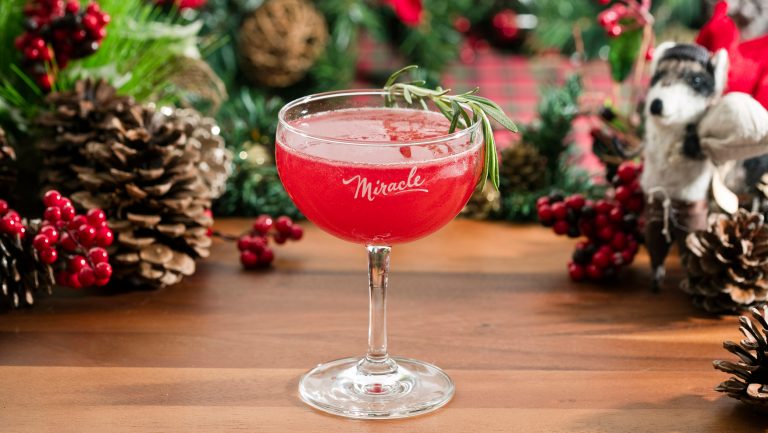
How It Works
Simply put, “it’s a franchise,” Boehm says. Participating bars pay a franchise fee, and they purchase, at cost, holiday-themed barware manufactured by Cocktail Kingdom (some also choose to sell that barware to guests, at a premium). In return, participating bars get a crash course on running a Christmas-themed bar that includes recipes created by de Soto for 12 cocktails, printed menus featuring those cocktail recipes, playlists, and social-media-ready professional drink photos to promote the bar.
Though it all sounds very (Christmas) cookie cutter, bars are encouraged to customize the Miracle concept. In addition to the core cocktail menu, created by de Soto and culled from best sellers in previous years, many bars opt to add their own drink specials, or they may have to tweak recipes since the availability of spirits varies from state to state and country to country.
A Franchisee’s Perspective
Jamie Kilgore and her husband, Ted Kilgore, are the owners of Planter’s House in St. Louis. This will be her second year as the general manager of a Miracle bar. The pop-up will open on Black Friday in a location separate from Planter’s House—in the neighborhood of Benton Park, about an 8-minute drive away.
A self-described “big-time Christmas junkie,” Kilgore says that getting the event off the ground is not without its challenges, although hurdles most likely vary from city to city. Last year, she recalls, “there was some fingernail biting.” While she was able to carry over a liquor permit from Planter’s House, a separate catering permit was required as well. Additional staff also had to be brought in, especially as demand ramped up. “We had to more than double our staff,” she says, including bringing in a bouncer for busy weekends.
A bouncer for a Christmas bar?
“We needed really strong people at the door,” she says. “People were so excited about it, they were ready to break in.”
After a TV interview sparked a flurry of local media mentions, business quickly snowballed, Kilgore notes. “Every night was busier and busier. By the last night, we had at least 100 people lined up before we even opened. We were turning away at least 200 people a night.” That’s a lot of ugly Christmas sweaters.
But it was well worth the trouble, Kilgore emphatically confirms: The holiday pop-up “tripled our sales for the month.” That includes revenue from drinks, Cocktail Kingdom holiday glassware sold to customers, and sales of food made by the pastry chef at Planter’s. In addition, half of the proceeds from snack sales—a total of $6,500—went to a local charity called Santa’s Helpers.

Year-round Christmas Prep
For bars that are just now thinking of doing their own DIY Christmas pop-up, Boehm has a message: You’re already too late.
“We have a staff,” he says, “and they’re working on this 12 months of the year. By November, we’re already working on the next year.”
By July, Boehm has most of the locations signed up to participate. By September, packets with cocktail recipes, holiday playlists, and mood boards with suggestions on how to decorate are delivered to the participating bars so staff training can begin. By October, the custom glassware is delivered. And by November, training is expected to be completed so that on the day after Thanksgiving, the bars are ready to crank out rounds of Jingle Bell Nogs and Christmopolitans.
Not every venue, however, is suited to be a Miracle bar, Boehm notes. “We interview everyone to make sure they have the skills to do it. If they don’t get it, we can’t guarantee it will be successful. When we turn people away, it’s usually because they’re too close to an existing location. Otherwise, we try to explain that this is part of a group effort and this is how we do it. If they’re not able to commit to doing it our way, then it’s a crapshoot about whether it will be successful.”
Measuring a Miracle
How do you measure the success of a Miracle bar, then? Boehm says the pop-ups aren’t obligated to make specific quotas and that he doesn’t have “strict economic goals” for the Miracle concept overall. “In general, I don’t have budgets, quotas—anything except continued growth.”
But Boehm asserts that most bars that participate in the Miracle concept double their December sales. (“Contractually, they don’t have to report their sales, but most do,” he says. “We had 17 locations last year; I know sales on 12 of them.”) And most opt to collaborate again the following year, though it doesn’t hurt that they’ve already purchased the glassware and decorations and can pack those sunk costs away until the next holiday season.
In addition, Boehm cites a more qualitative, longer-term success metric: getting people interested in quality cocktails, well beyond the holiday season. “We see more people coming in for Christmas fun,” he says, “and saying, Wow, I didn’t know how much I liked cocktails! It’s good for cocktails in the long run.”

Dispatch
Sign up for our award-winning newsletter
Don’t miss the latest drinks industry news and insights—delivered to your inbox every week.
Kara Newman reviews spirits for Wine Enthusiast magazine and is the author of Shake. Stir. Sip., Nightcap, and Cocktails with a Twist (Chronicle Books).

